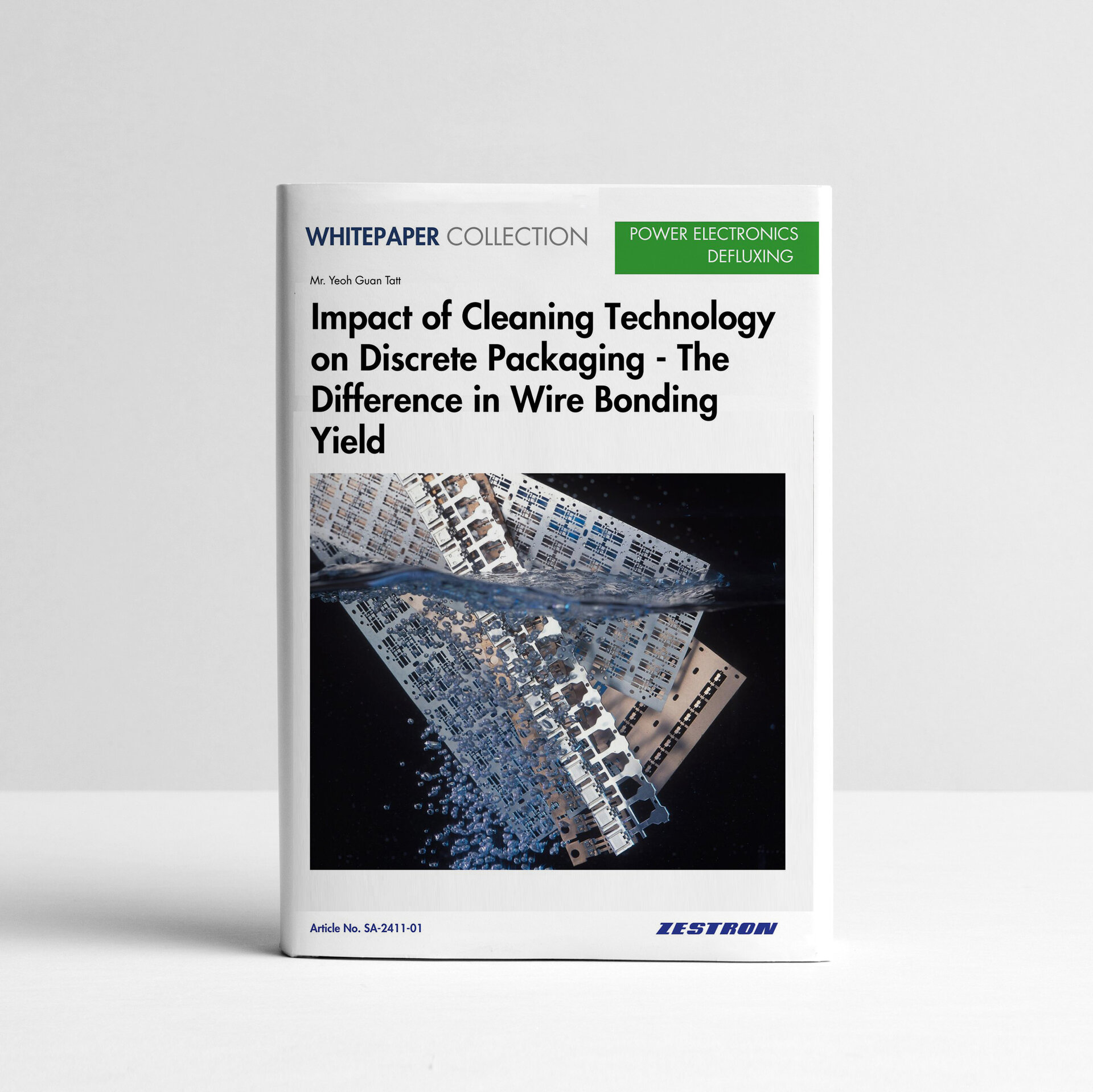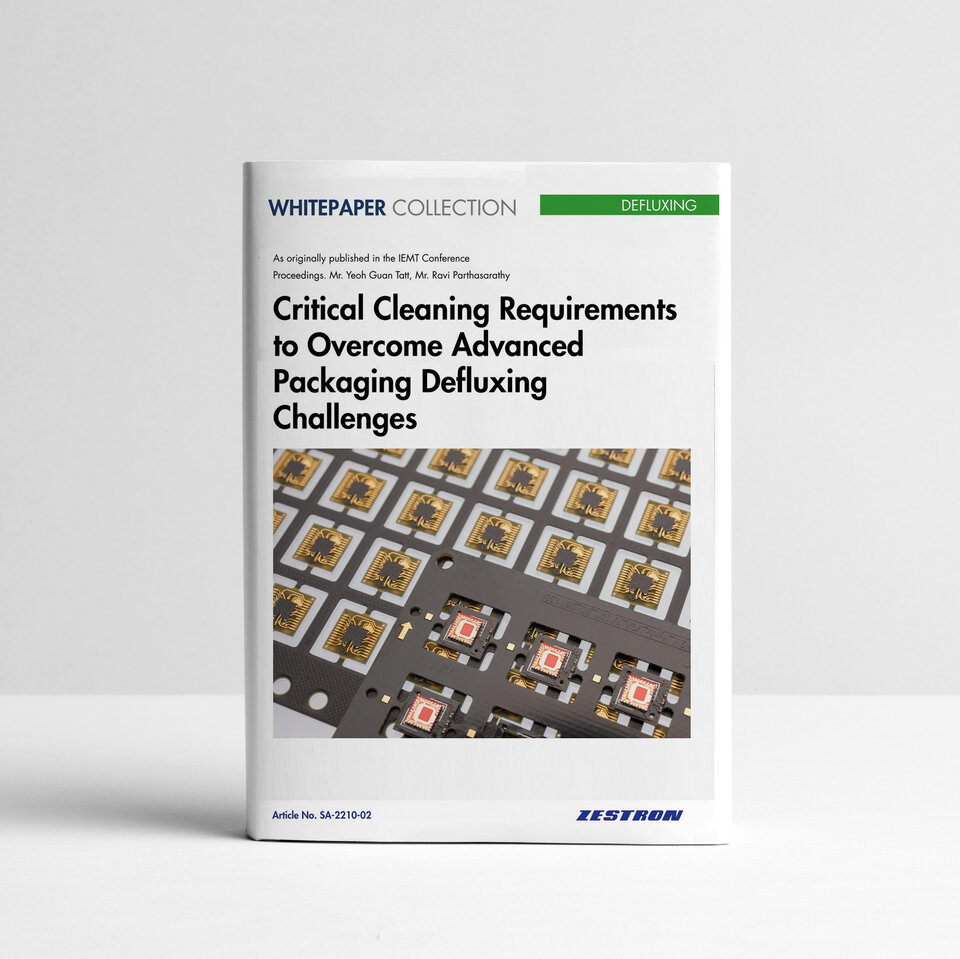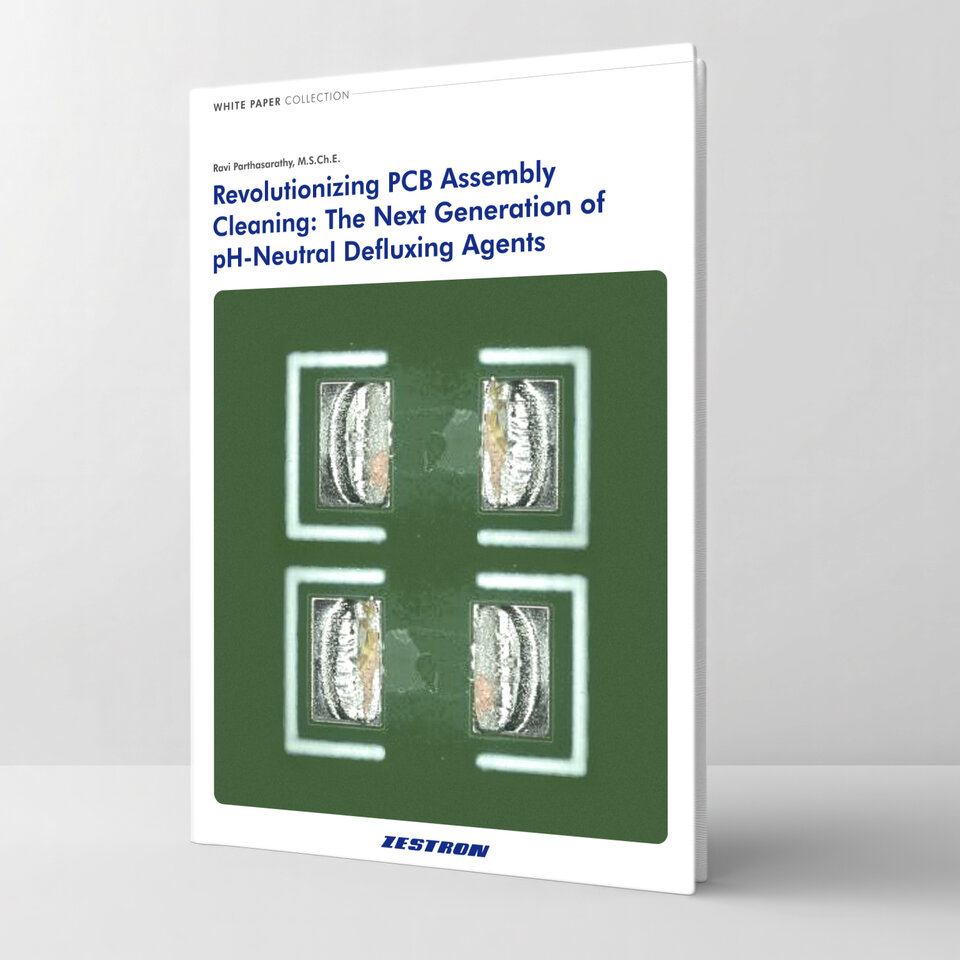Impact of Cleaning Technology on Discrete Packaging - The Difference in Wire Bonding Yield
WHITEPAPER-COLLECTION

Whitepaper-collection Impact of Cleaning Technology on Discrete Packaging - The Difference in Wire Bonding Yield
» FREE «
[ZESTRON South Asia - Yeoh Guan Tatt]
ABSTRACT:
Lead frame packages are commonly used in semiconductor package fabrication, where interconnections between the integrated circuits (IC) and the metal leads are typically established through die attach and wire bonding processes. Standard materials like epoxies, adhesives, or solder pastes are most often used in the die attach process. However, it is critical to remove any flux residues left behind after soldering before proceeding with wire bonding and moulding to ensure maximum yield in packages that use solder paste for die attachment. One of the most widely used cleaning agents to remove flux residues is isopropyl alcohol (IPA). While IPA is commonly used as a general cleaner in the electronics industry, it is not the most effective solution for flux removal.
Semiconductor package manufacturers produce millions of units daily and therefore, a small improvement in the wire bonding yield can significantly impact production efficiency and the overall product costs.
One such OEM was producing lead frame packages and using an IPA (isopropyl alcohol) in the ultrasonic cleaning process. However, their process resulted in a wire bonding yield of only 98%, measured after the moulding and deflashing processes. This indicated significant motivation to improve the cleaning process and the wire bonding yield.
A Design of Experiment (DOE) was developed to assess alternative cleaning agents and process equipment, aiming to optimize the cleaning process and to be evaluated based on the improvement in wire bonding yield. Process qualification was conducted through a pull test according to the MIL-STD-883E method 2011.7. Throughout the DOE process iterations, process improvements were identified through visual inspection, pull and shear testing as well as overall yield measurement from the wire bonding process.
For more information, request for this free whitepaper.
Delivery Form: PDF / Article-No: SA2411-01





